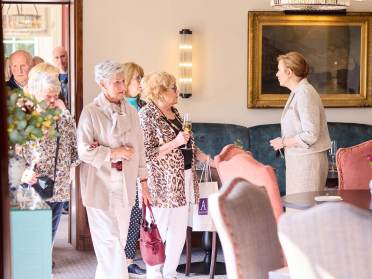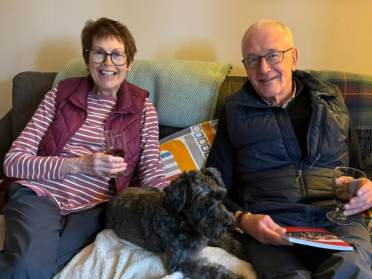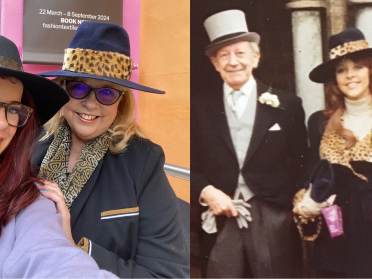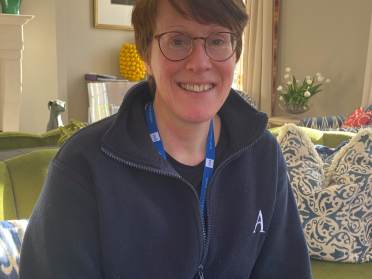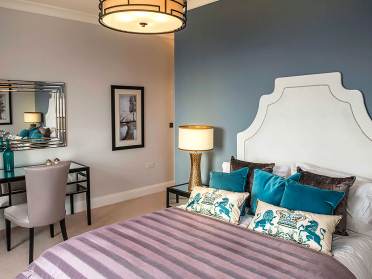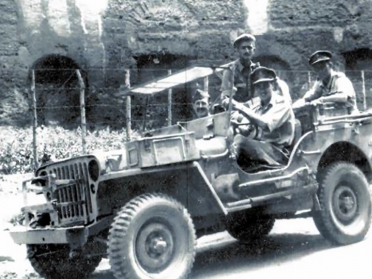
At a time when travelling the world feels close to impossible, look to the future and find some inspiration for your travel bucket list.
Mr Hacker and his wife, owners at Audley Cooper’s Hill in Surrey, kindly share below their experience of visiting another breathtaking part of the world, Machu Picchu and the Sacred Valley of the Incas.
"This Travel Guide describes a private, escorted tour from Cuzco to Machu Picchu. Travelling through the Sacred Valley of the Incas in Peru is stepping back in time, a time where the sounds of the Spanish Conquistadores still echo through the remains of the once great Inca civilisation."
Our private tour was organised by Audley Travel (no relation) and took five days. The benefit of a personal guide is you travel at your pace, see sites the main tour operators do not take you to but most of all, you get a far greater insight into the people, their culture and their history. Your arrival in Cuzco, once the capital of the Incas, leaves you breathless! You are now at 14,000 feet so the air is thin.
Arriving in the luggage hall one is met with old ladies offering you strange leaves. Suspicious and, unless otherwise forewarned, you shoo them away. But these are the coca leaves that, when chewed, are a great help in improving one’s breathing. (By the way, coca should not be confused with cocaine!). Now you have your breath back it is time to explore. The city is vibrant as it is the starting point for the many tours that go into and through the region to Machu Picchu.

The city exhibits strong influences of Spanish architecture around the main square, Plaza de Armas, where two large churches dominate the skyline. But look more closely and remains of Inca architecture are to be found.

We use Cuzco as a base to explore the Inca sites in the surrounding area. The first is Tambomachay. The purpose of the site is uncertain, it could have been a military outpost but most importantly is introduces us to the skills of the Inca stonemasons, carving stone to form tight joints without the use of any mortar, a skill we will see again and again.

Our next stop is the majestic fortified temple complex Sacsayhamán, which means Royal Eagle. The site overlooks Cuzco and was constructed around 1450. The site is built using massive rocks, some as much as 100 tones. They are crafted and carefully interlinked to provide formidable walls and terraces that blend harmoniously into the natural landscape.
The photograph above gives some idea of the size of the stones and walls. The stones were roughly cut some distance away and moved to site using ropes, poles and ramps before being finally dressed and fitted into position without the use of any mortar. It is estimated some 20,000 labourers were involved in the construction.

From Cuzco our driver heads North West into the Valley of the Incas and our first stop is to visit a craft centre where we meet Alpacas and Llamas whose wool is used to create all manner of clothing. We were treated to a display of traditional spinning, dying and weaving. Traditional techniques and dress are still the norm today.
Further along we come to the Salineras de Maras salt pans. These have been in use long before the Inca civilisation. Salt is a key commodity in the area and the salt pans, being worked by women, are formed by streams that have been channelled into the small salt pans and allowed to dry out. The tall white hats are a common site, especially on the older women. This is not a wealthy area and farming is manual and undertaken by women. The pigs and sheep are well-disciplined keeping to their respective sides of the road, perhaps just a lucky photograph.

The site at Moray sits at 11,500 ft and contains unusual Inca ruins that form concentric terraces. Each terrace is about 5 ft deeper than the previous and its purpose is still a matter of speculation, the most likely theory is the site was used to test different crops to see how they would perform in different micro-climates. The design creates a temperature difference of 15˚ C between top and bottom. There is also a built-in irrigation system within the terrace structure.

Ollantaytambo is located at an altitude of 11,500 feet. The Town was built as the royal estate and ceremonial centre. At the time of the Spanish conquest of Peru, the town served as a stronghold for the Inca resistance. The town is built in terraces up the side of the mountain and is now a major tourist destination as it is on the hike known as the Inca Trail up to Machu Picchu.
We approach Machu Picchu by the luxury Hiram Bingham Train. There are only 48 passengers on this exclusive pullman style train and the journey takes around four hours. Enjoy sipping a Pisco Sour, a Peruvian traditional drink, as the scenery glides past. Lunch is served with all the refinement of a Belmont Hotel. The train takes its time slowly working its way towards the town of Machu Pichu Pueblo following the course of the Urubamba River as you enjoy at the scenery the unfolds around you.
It is a winding road with many hair-pin bends that takes the traveller up to the gates of Machu Picchu where Belmont conveniently have a hotel right outside the gates. What could be better as we have an early morning start tomorrow.
Access to Machu Picchu is restricted in order to control the effects of tourism on this World Heritage site. Tickets must be pre-booked and an official Machu Picchu guide is a must. Gates open at 6 am and there will be a crowd, but once the gates open, they soon disperse. Machu Picchu sits at the top of a mountain and the buildings were constructed using enormous and imposing stone blocks joined without using mortar that created one of the most important religious, political and cultural centres of the Inca empire.
Your tour guide will take you to the key sights, avoiding busy areas, whilst providing a commentary on the life and time of the Incas, how the civilisation grew and then lost to the Spanish Conquistadores and then how the abandoned site was rediscovered by Hiram Bingham in 1911. Watching the sun rise over the mountain and throw its first rays on light on Machu Picchu is truly magical, an unforgettable experience. The guided tour of the site takes as long as you want it to be, but 3-4 hours is plenty. There are a lot of steps and passageways to explore but as the altitude here is around 8,000 feet breathing is no longer an issue.

An unforgettable experience
At the end of your visit the bus will take you back down to Machu Picchu Pueblo to catch the train back to Cuzco. You will have had an unforgettable few days exploring the beautiful and enchanting Valley of the Incas.
Thank you Mr and Mrs Hacker. Read more stories from Mr Hacker and other Audley owners.

